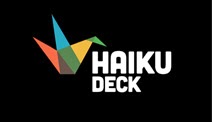I have rated them according to this scale:
★★--mild reccommendation
★★★---highly recommended
Google Apps Rating: ★★★
What I absolutely love most about Google Apps is that it's free and it features many useful tools within one website. I've been using my gmail account since I first started college here at the University of Guam, but I mainly used my gmail account specifically for gmail. I didn't know that I could create a blog. I used Google Docs once but I forgot about how convenient it was to share documents with classmates and be able to work as a group without having to be in the same room. Google Apps is extremely useful for students and teachers because it is easy to use, easy to access and free for use!
LiveBinders Rating: ★★
Livebinders is useful because I can store all my online sources here. I can combine them all on website and use it at my disposal. I think livebinder is extremely useful especially for students because many of our sources for information and research come from the internet and livebinder can be used as a way to store all those websites for future use or just in case you forget to mention something featured on the website. I'd definitely encourage my students to use it for that purpose only. The main reason why it's not highly recommended is because I can't customize the binder to my liking. I'd like the privilege of customizing the binder and making it my own.
Moodle Rating: ★★★
What I love most about moodle is how easy it is for users to turn in assignments. A couple years ago or so, moodle didn't allow users to drag files into the drop box so easily. Moodle is like a personal secretary that will remind me about upcoming assignments or online quizzes. It also allows me to view grades and how I am progressing in a class. Teachers can easily give feedback on assignments and can save paper and trees by giving progress reports online.
Mozilla Firefox Rating: ★★
I started using firefox out of curiosity in high school because internet explorer was always the go-to website back in the day. I am personally biased against any other web search engine because google chrome has proven to be faster for me. I did learn during this semester that firefox is safe, reliable and faster than internet explorer. All in all, it depends on the speed of your internet or wifi and not always on the search engine.
Expressr Rating: ★★★
I really enjoyed using empressr mainly because it was just so easy to use and access. There are so many things you can use in the presentation to enhance it and capture your audience. I can use videos, graphs, pictures, audio and animations. I'll admit I was overwhelmed with all the tools and extra buttons, but the more I used empressr and the more I became familiar with the website, the more comfortable I was. I definitely liked how graphs can be utilized. It can definitely be used for business meetings and for showing statistics.
Toondo Rating: ★★
Toondo is a website that people can use to make comics and even make comic books. It allows people to actually tell stories using comics of their creation. I personally liked toondo because it provided more options regarding characters, props and background. In comparison to pixton, toondo doesn't allow users to manipulate all body parts and instead allows users to search for a specific stance they are looking for. There are so many options to choose from and it looks more comical than the characters in pixton.
Haiku Deck Rating: ★★
I like haiku deck so much that I've already used it for other class presentations. What I love most about haiku deck is it's simplicity. It's a very straightforward outline and doesn't have complex options. It is also extremely easy to make presentations more appealing to the eye with beautiful backgrounds. The reason why I think teachers or students may not want to use it is because the words are limited. By that I mean, the more you type the smaller the words get. This presentation tool requires that users provide short details upfront and more details orally. Another aspect is that haiku deck doesn't allow users to import additional pictures besides the picture used in the background. But haiku deck automatically gives credit to the person whose pictures are being utilized in your presentation. Haiku deck is easy to use and easy to sign up for.
Wix Rating:★★★
Considering the fact that I have never made a website before, wix was an eye-opener for me. I never would have thought that creating a website could be SO easy. I loved how wix provided different layouts and for those layouts, there are categories that make it easier to find what kind of website layout you're looking for. Wix lets you shine with creativity and provides users with a variety of options. I will definitely reccommend this website not only to my colleagues and future students, but to everyone and anyone. I used to think creating websites was hard and that only business people really need their own website. Now, I can think of many ways I can use this website in the classroom, and everywhere else.








